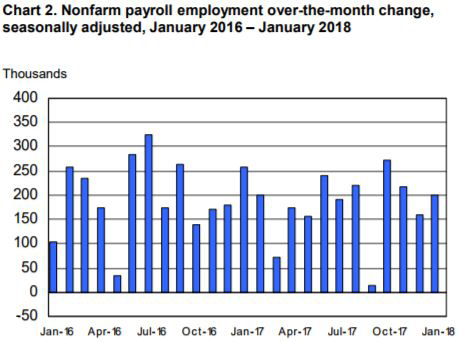Economy Watch: U.S. Economy Creates 200K Jobs in January
Employment rose in some real-estate related sectors, such as construction, food services and drinking places, health care and manufacturing, according to the latest Bureau of Labor Statistics jobs report.
By D.C. Stribling, Contributing Editor
Total payroll employment increased by a net of 200,000 jobs in January, the Bureau of Labor Statistics reported Feb. 2. That’s an uptick from December’s revised total of 160,000 positions, but less than in November, when 216,000 jobs were created by the economy. Employment continued to rise in some real estate-related sectors, such as construction, food services and drinking places, health care, and manufacturing.
Construction added 36,000 jobs in January, with most of the increase occurring among specialty trade contractors (up 26,000), the BLS reported. Employment in residential building construction continued to trend upward for the month (up 5,000). Over the last 12 months, construction employment has increased by 226,000, pointing to strong demand in that sector as both nonresidential and residential projects are developed.
Employment in food services and drinking places continued to trend up in January, by 31,000 jobs, with that industry adding 255,000 jobs over the past 12 months, the bureau noted. The health care industry added 21,000 positions in January—only a little less than the average monthly job growth in 2017 of 24,000 jobs. Employment in manufacturing remained on an upward track in January, with 15,000 jobs added; manufacturing has added 186,000 jobs over the past 12 months.
Average hourly earnings for all employees on private payrolls rose by 9 cents to $26.74 in January, following an 11-cent gain in December, the BLS reported. Over the year, average hourly earnings have risen by 75 cents, or 2.9 percent, which is somewhat ahead of inflation.
The headline unemployment rate was unchanged at 4.1 percent, down from 4.8 percent a year ago. The bureau’s more expansive definition of unemployment, the U-6, which includes workers who are only marginally attached to the workforce—such as those working part time who want full-time jobs—came in at 8.2 percent, up from 8.1 percent in December, but down from 9.4 percent a year ago.








You must be logged in to post a comment.